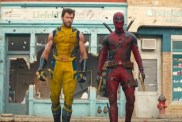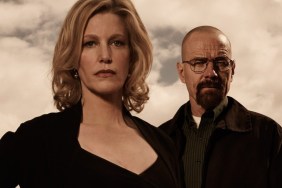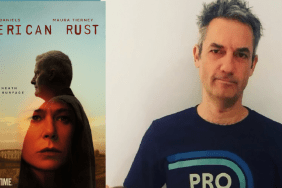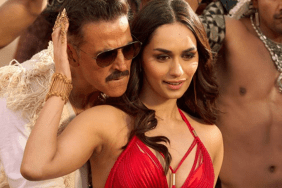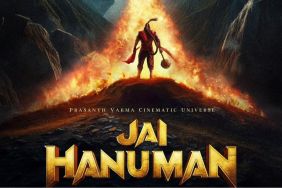
Director Baltasar Kormakur talks to ComingSoon.net about his action-adventure-thriller, Everest
There have been many amazing achievements made by humans over the past hundred years, but one of the greatest challenges has been the attempt to scale some of the most treacherous mountain peaks by brave men and women, only some of whom survived to talk about their adventure. When it comes to the most perilous mountains to climb, one word usually is the first that comes to mind: “Everest.”
As it were, that’s also the title of the latest film from Iceland’s most respected filmmaker Baltasar Kormakur (Contraband), a grand epic that pulls from a number of first-hand sources to tell the true story of a group of mountain climbers trying to reach the summit of Everest in 1996 who were blindsided by a sudden storm that left a number of them for dead.
Kormakur pulled together an impressive ensemble cast to tell this riveting story of man vs. nature, which includes Jason Clarke as Rob Hall, the leader of one of the expeditions that includes John Hawkes, Josh Brolin and Michael Kelly, as well as Jake Gyllenhaal, Sam Worthington, Emily Watson, Keira Knightley and Robin Wright.
ComingSoon.net got on the phone with Kormakur as he was readying for the film’s premiere as the opening night film at the Venice Film Festival.
ComingSoon.net: We spoke about this movie before, and I think my original impression that “Everest” was more of an action movie, but it isn’t really. When we last spoke, I think you said it was more like some of your Icelandic films, only on a much bigger scale. Can you talk about the tone you were going for?
Baltasar Kormakur: First of all, I wanted to create a movie that had the intimacy of an indie on the scale of a blockbuster. That was one thing that really interested me. What I’m saying is that the characters are not drawn too broad. I tried to make them as real as possible, which was probably closer to my indie roots. Then trying to keep the mountain and the scope of the scenery, so it’s kind of two challenges that I was faced with. The story has very climactic elements and is a really serious story, but I also wanted to intentionally keep it working as a thriller. I didn’t want it too drawn out. It was these two things I was trying to pull together, basically. That’s by constantly keeping the mountain alive, and that you feel the dangers of the mountain, and at the same time, develop the characters in a way that you will be more into them when the storm hits you and give time to build up those characters so you care for them when it happens.

CS: Also the fact that it’s based on real people. Jon Krakauer is still alive and he’s in another recent movie about mountain climbing (“Meru”), so we know he’s a real person who’s still alive and survived what happened.
Kormakur: A lot of the people in the story are still alive. Beck Weathers is alive, but he has lost his hands and part of his face. The wife, Jen Arnold, and their daughter, I flew to New Zealand to meet them, and Helen Wilton, the character that Emily Watson plays, and Caroline, the doctor that Elizabeth Debicki plays and even Guy Cotter, Sam Worthington’s character and David Breashears. All these people were a part of the story and I met them all and tried to understand both who they are and also who the other people who are not among us any more. That also gives you another layer of both a challenge, because you want to portray them as truthfully as you can, but at the same time, you also want to make a movie. You don’t want to pull any punches. I think after meeting those people and after gaining their trust in me and the producers and our intentions that they were more relaxed about showing their hubris and the mistakes that were made on the mountain that all add to this tragic outcome.
CS: It must be even more pressure when you know that these people are going to see the movie and see how they’re portrayed. How do you balance that when you’re actually writing and talking to these people, getting their side of the story, and then knowing that you have to still make a movie that’s entertaining and is the movie that you want to make? What kind of pressure does that create?
Kormakur: Well, it’s quite a balancing act, because you don’t want to be unfair. I don’t like what I’ve seen in even documentaries today, that people are villainized just for the sake of the movie. You can see that in documentaries, we tend to portray the truth, because we’ve become so accustomed to that kind of storytelling. So there’s an element, and I feel even to some degree that was what Krakauer did in his book. I think it’s a wonderful book, but I think he villainized Anatoli a little bit to create that kind of tension. I rather wanted to still make it play out in a more complex way that everyone is a hero and a villain on the mountain, in a way, because they all made mistakes, and you can’t pull out one and blame a tragedy like that on one person. I’m not saying that it was done in the book, but the outcome of it became a little bit like that. But there are like 10 books written about this, so you have a lot of information, and then you’ve got to assess what you believe is the truth in this situation and be true to yourself. In some moments, of course, there is no information, so you have to create or try to pull together the story. You have the A and the C, you don’t have the B, basically, so you’ve got to fill in that gap. But at the same time, it’s more about let’s concentrate on what part of the story you tell that pulls it dramatically together, instead of lying or changing. I mean, I’m sure the studio would’ve loved me to save Rob, but I can’t. I’m not saying they asked me, but that would be more rewarding to the audience, that Rob would survive. There’s a limit. By the way, I think we tried to be as truthful and real as possible. I don’t think there are any lies or telling the story knowingly in a different way than it really happened.

CS: When you make a movie like this, you want to make a movie that’s truthful because the truth is usually more interesting than the Hollywood ending kind of thing. If you made this as a true Hollywood movie, you’d have a heroic guy who gets trapped in this terrible storm but he manages to get back down.
Kormakur: Actually, it would probably be about getting up the mountain and once they’re at the top, it would be finished. That would be the version, but I think at the same time, it is true, but then you need Hollywood to be able to do a movie of this scale and with this kind of budget. So you have to kind of fool it through the system a little bit.
CS: When they reached the top of the mountain an hour into the movie I was like, “Wait, they made it to the top.” I just assumed they were going to die on their way to the summit, since I didn’t know the actual story beforehand.
Kormakur: Yeah, now it’s another hour to go. That’s the thing that also happens a lot, is that people get summit fever and they go up, even though they feel like they don’t have the strength, but then their achievement and the greatness of being up there and then they just collapse. They have nothing left in them and the journey down is often the hardest one. My understanding is from the people, Guy Cotter, who was there on the other mountain, played by Sam Worthington, he was there the year before and he actually dragged Doug down the mountain the year before, Doug Hansen, John Hawkes’ character. So yeah, he almost died the year before and he still went up the year after. I really wanted that, because it’s not a movie about a group of people that are hit by a storm. It’s about the commercialization of nature, of how things can start to go wrong, small details start to fall apart. In the end, when they’re hit by the storm, they don’t have a chance. Maybe they could’ve been saved if the storm wouldn’t have hit, but they would still be in super trouble.
CS: You mentioned before about having a villain in those kind of movies. I thought Jake Gyllenhaal’s character Scott Fischer offers a different dynamic. He’s fairly boisterous when we meet him and not knowing the story going into it, I thought he might add that “bad guy” element you mentioned, but it’s a different role but it’s also a smaller role in the movie. In some ways, Scott Fischer could probably have his own movie.
Kormakur: Yeah, you could make a movie about him, absolutely. We tried to get as close to him as possible to radio interview and stuff. That’s one of the things you took from him, that he had this kind of “Wee-hoo!” cowboy attitude. But he also was a serious guy, and what I really wanted Jake to do, and I think he did really beautifully, is to come in with a totally different energy into the group. You have Rob Hall’s character, who’s much more methodical, he’s well prepared and he does things more by the book, but then, you have a guy who has a very different attitude and comes with a very different energy. They have a very different method, because basically, Rob’s he’s more somebody who leads people up the mountain, and Scott is more that they have to do it on their own, which people can fight over and there’s been a lot of discussions about what’s right or wrong in that. I think either can be.

CS: What were the logistics of making this? I know you actually went to Nepal and shot some stuff there. You went to the Alps and shot some stuff there and then you also shot a lot at Pinewood. I assume you created some of the sets there even just the tents and base camp. Can you talk about the logistics of creating the weather or working with the existing weather, that you’d have to deal with by just shooting in real locations?
Kormakur: Yeah, we started the journey in Katmandu, which was already a complicated shoot because the city is absolute chaos. Then we had to fly out from the most dangerous airport in the world, Lukla, which is featured in the movie. It’s reported as the most dangerous airport in the world. Then, from there, we basically had to walk up the mountain, walk up the foothills of Everest and they had to carry their own equipment. There were no assistants around, all that stuff. We had to sleep in lodges that were unheated, so we had to have electric blankets. Then, from there, we went as high as we possibly could.
We had to evacuate people because of altitude sickness at some point. We were just getting too high. Then, we flew to the Dolomites and we shot there for six weeks in minus 30 Celsius. It was really a grueling shoot and we had an avalanche warning posted every day and we actually had to evacuate the sets quite a few times. We lost some of the sets in the snow. So it was really complicated. Then from there, we went to Rome and that’s where we did some of the base camp stuff, so that’s in better conditions. In the end, we did a lot of the tents and stuff like that in the studio, and some of the higher mountain stuff, like the storm and stuff is impossible.
But even in the studio, it was quite hard work, because we had built this huge ridge in the studio and then we had to blow stuff on the actors so we could create like a snowdrift. We also imported real snow from the Netherlands to be able to blow on the actors on the set, and we created like a big see-through freezer tank inside the studio and dropped the cold below minus Celsius, and had minus 60 Celsius degree snow to blow in their faces to create the real frostbitten faces and the cold beards and all that. We were always working from anything we could do physically. Then, the whole post-production of creating a 3D model of the mountain and backgrounds, and we had to change some of the backgrounds out. But because we started from reality, and then we always had to pull everything towards that.
CS: I assume this was a longer post-production phase than any of your other movies?
Kormakur: Yeah, everything was more complicated. I mean, just the sound because of the wind machines, we need to ADR it and then we need to really ADR it. Then, the whole post-production on the visual effects and all that, and they’re doing the 3D version which was very important to me, to create the volume of the mountain, so you feel the depth and the height. I didn’t want it to thrust stuff at people, you know? I just wanted to give them the overlooking a fishbowl feeling, like you can feel the depth and the vertigo. I remembering saying this to (producer) Tim Bevan that I don’t want to do that effect on people. I want to do the, “Whoa! Oh sh*t!,” and create a more subtle feeling of “Oh, this is a really dangerous place,” not like throwing things at people to scare them.
CS: I think the most effective in the scenes are the ones as they’re crossing the ladders over the crevices and you see how deep the crevices are. I mean, the 3D really added to those scenes by the way they were shot. By the way, was Jon Krakauer a consultant on this?
Kormakur: No, he was one of the only ones I didn’t have any contact with, and I don’t know. It might have been a legal thing.
CS: I wasn’t sure because I know he was involved with the documentary about the guys who climbed “Meru.”
Kormakur: No, and I think his book is great, by the way, apart from that I disagree with the sentiment, and I always have, but I think it’s beautifully written and it’s probably the best book of the lot.
CS: Do you know what you’re going to do next? I know you’d been developing “Reykjavik” even before this. Is that something you’re able to start soon or is that not happening?
Kormakur: Yeah, well, I had written a “Viking” movie and I also have a movie with Cate Blanchett called “Cascade,” so I have a couple of projects that I’m kind of taking the next steps and seeing how it goes from here. It was a long journey on this one. I’ve just got to take like a break and see where it all stands.
Everest opens in select cities in IMAX 3D on Friday, September 18 (with previews Thursday night) and then it expands nationwide on Friday, September 25. We also have more with Kormakur about a potentially controversial scene in the movie once it comes out.
Everest
-
Everest

-
Everest

-
Everest

-
Everest

-
Everest

-
Everest

-
Everest

-
Everest

-
Everest

-
Everest

-
Everest

-
Everest

-
Everest

-
Everest

-
Everest

-
Everest

-
Everest

-
Everest

-
Everest



